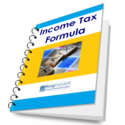You must have heard many times that investment in stocks is risky. Not always. In fact, it can be totally risk-free if you follow a simple rule. Read on…
| “No risk, no returns.” This sounds familiar, doesn’t it? Haven’t you heard this, and similar things, repeated over and over again? Everyone agrees that equities give the best return, but only because they are risky. |
But that is not always the case. The riskiness of stocks depends on how long you keep invested. If you invest for the long term, equities are virtually risk-free.
This is a very bold statement to make. So, let’s analyze past 18 year’s data, and see how risky stock investment actually is.
(The idea presented here is radical – and therefore, the article is longer! So, please bear with me. If you have any questions, please feel free to ask them in the comments section at the bottom of the page)
The Data
| 1 Year | 5 Years | 10 Years | 15 Years | |
| Maximum Return | 242.24% | 43.88% | 18.98% | 16.04% |
| Minimum Return | -47.37% | -5.33% | -1.13% | -7.23% |
| No. of Periods | 208 | 160 | 100 | 40 |
| No. of Times Negative Return | 75 | 24 | 1 | 0 |
| Percentage of Negative Returns | 36% | 15% | 1% | 0% |
(Download this spreadsheet that contains the full data and analysis. You need to be logged-in to download the spreadsheet. Please take advantage of the free registration that takes less than a minute. To know the benefits of registration, please click here.)
What Has Been Done?
The values presented are for the Nifty index, for which the data is available starting June 1990. In this analysis, Nifty is being used as a proxy for stocks in general.
Now the story. Say we have 4 people:
Mr. Short Term: Mr. Short Term invests in the Nifty on the first trading day of every month, holds it for a year, and sells it exactly after 1 year. Thus, a purchase made in June 1990 is sold in June 1991.
Mr. Short Term does this every month, month after month. Starting in June 1990, he has done this 208 times. He last sold his Nifty in Oct 2008, which was bought in Oct 2007.
How has he fared till now? The maximum profit he has ever made is 242% per year. That’s whopping! But at the same time, the maximum loss he has ever made is -47% per year – and that is equally whopping!
Starting June 1990, he has made 208 1-year investments, every month. Out of these 208 investments that he has made, 75 times he made a loss. That is, he made a loss 36% of times.
Mr. Medium Term: Mr. Medium Term also invests in the Nifty on the first trading day of every month. But he holds it for 5 years, and sells it exactly after 5 years. Thus, a purchase made in June 1990 is sold in June 1995.
Like Mr. Short Term, Mr. Medium Term does this every month, month after month. Starting in June 1990, he has done this 160 times. He last sold his Nifty in Oct 2008, which was bought in Oct 2003.
The maximum profit he has ever made is 44% per year. Quite good! But at the same time, the maximum loss he has ever made is -5% – again not insignificant!
Out of the 160 investments that he has made, he made a loss 24 times. That is, he made a loss 15% of times.
Ms. Long Term: Ms. Long Term invests in the Nifty on the first trading day of every month, holds it for 10 years, and sells it exactly after 10 years. Thus, a purchase made in June 1990 is sold in June 2000.
Ms. Long Term does this every month. Starting in June 1990, she has done this 100 times. She last sold her Nifty in Oct 2008, which was bought in Oct 1998.
How has she fared till now? The maximum profit she has ever made is 19% per year. That’s very good. And the maximum loss she has ever made is -1% per year – barely a loss.
Out of the 100 investments that she has made, she has made a loss only once. That is, she made a loss 1% of times.
Ms. Very Long Term: Ms. Very Long Term also invests in the Nifty on the first trading day of every month, but holds it for 15 years, and sells it after exactly 15 year. Thus, a purchase made in June 1990 is sold in June 2005.
Ms. Very Long Term does this every month, month after month. Starting in June 1990, she has done this 40 times. She last sold her Nifty in Oct 2008, which was bought in Oct 1993.
And how has she fared till now? The maximum profit she has ever made is 16% per year. And how much is her maximum loss? Guess what – she has never made a loss! That’s just WOW!
So, for the 40 investments that she has made, she has made no loss. That is, she made a loss 0% of times.
(Download this spreadsheet that contains the full data and analysis. You need to be logged-in to download the spreadsheet. Please take advantage of the free registration that takes less than a minute. To know the benefits of registration, please click here.)
Analysis – What Does This Mean?
There are many interesting patterns in this data – did you notice any?
Variation: As the time span of investment increases, the Variation (or what is statistically called Standard Deviation) in returns decreases. For 1 year, returns range from +242% to -47%, whereas for 5, 10 and 15 years, the ranges are +44% to -5%, +19% to -1% and +16% to +7% respectively.
Predictability: This gets derived from the above point – As the holding period increases, the variation decreases, and therefore, the outcome is much more predictable. So, although for one year investments you can’t be sure of the outcome at all, for 10 & 15 years investments, you can be fairly certain about the kind of return that you would get.
Maximum Return: For investments of 1 year, the return of 242% sounds exotic! But remember, it is highly unpredictable, and it is only for 1 year.
Compared to this, the returns from 10 & 15 year investments sound pale at 19% and 16% respectively.
But let’s note that these are the returns over 10 year and 15 year periods – the return is CAGR. You get this return for each of these years. Consider the effect of compounding, and you would understand that this has a potential to explode your initial investment!
To give you an idea, Rs. 1000 would become Rs. 5695 in 10 years at 19% – that is, would become 5.7 times in 10 years. Or, Rs. 1000 would become Rs. 9265.2 in 15 years at 16% – that is, would become 9.3 times in 15 years.
This is fabulous, and can’t be matched by most other investment classes.
(To know more about CAGR – Compound Annual Growth Rate – please read “Compound Annual Growth Rate”. To know more about compounding and its effects, please read “Start saving early and gain from Compounding – Early bird gets the worm”)
Minimum Return: The maximum possible returns are fabulous for long term or very long term investments. What about the minimum returns?
The shorter the investment horizon, the more the loss can be.
For a 1 year investment, the loss can be as high as -47% – meaning that your investment can be reduced to almost half in just a year!
But for 10 & 15 years, either the loss is negligible, or there is no loss at all!
Probability of Loss: As the investment time horizon increases, the probability of loss also decreases.
For a 1 year investment, the possibility of incurring a loss is 36% (a loss occurred 36% of times in our analysis), whereas the possibility of making a loss on a 10 or 15 year investment is 1% and 0% respectively.
Returns and Inflation: Even the minimum return from a 15 year investment is 7.23%. This is higher than the average inflation we have seen in India. Thus, if you invest for the long term, even the worst possible return would be inflation beating!
(Download this spreadsheet that contains the full data and analysis. You need to be logged-in to download the spreadsheet. Please take advantage of the free registration that takes less than a minute. To know the benefits of registration, please click here.)
A Point to Ponder
Please note that this analysis has been done in October 2008 – when the stock markets are 46% down from their peak levels seen in January 2008.
Also, the period covered in the analysis covers many stock market booms and busts – it covers the Harshad Mehta period, the Ketan Parekh period, the dot com bust, etc.
Even then, we see that over the long term, stocks have given a consistent and predictable return.
One conclusion that can be derived is that if you are investing for a long to very long term, the level at which you start your investment becomes insignificant. Therefore, do not try to time the market.
Lessons
I think the conclusion is fairly obvious – Investments in equities give the best, inflation-beating return when you invest in stocks for a long to very long term.
And, when you invest for a long to very long term, equity investment is virtually risk free.
The primary reason for good returns is that by keeping invested for a long term, you ride the growth of companies. And not to forget the fact that you end up paying far less brokerage!
(Please read “Stocks – The winning bet for the long term” to understand long term equity investments better).
When to Invest in Stocks
Since equities give the best returns in the long run, you should invest in equities only for long term goals.
(Please read “Goal Based Investing” to get a step-by-step understand of investing based on goals).
Such long term goals could be:
- Your retirement
- Your child’s higher education (if you start investing when the child is very young)
- Your child’s wedding (again, if you start investing when the child is very young)
- Purchase of a house at the time of retirement
When Not to Invest in Stocks
Since short term returns from equity investment are unpredictable (that is, since stocks are risky for short term investment), you shouldn’t invest in stocks if you want to park your funds for a short term.
You might be tempted to make a quick buck in market “boom” times, but it is best to resist such temptations!
Thus, don’t invest in stocks for:
- Funding a car purchase that’s 2 years away
- Funding a vacation that you want to take in a couple of months
Conclusion
To reiterate our findings:
- As the time of equity investment increases, the Variation (or the Standard Deviation) in returns decreases
- As the holding period of stocks increases, the returns become much more predictable
- As the holding period of shares increases, the possible loss (actual amount of loss) decreases
- As the investment time horizon increases, the probability of loss (the possibility of you incurring a loss) decreases
- Don’t try to time the market – any time is right to start a long term investment
- The return from a long term investment is higher than the average inflation – equity investment is inflation beating
Investments in equities give the best, inflation-beating return when you invest in stocks for a long to very long term.
When you invest for a long to very long term, equity investment is virtually risk free.
Happy long-term investing!
Other articles you might be interested in:
- Income Tax (IT) treatment of House Rent Allowance (HRA)
- Only paid out arrears to be subject to TDS for government employees
- An introduction to Technical Analysis
- Retirement money: How to invest, where to invest
- Do you have an SIP? Don’t stop it!
- Indian banks hike FCNR, NRE deposit rates
- Renting vs Buying: To buy a house or rent it?
- RBI proposes drastic reduction in clearing charges for outstation cheques
- Definition of Residential Statuses: Resident, RNOR, NRI, PIO
- An Introduction to Islamic or Shariah Compliant Banking
- Early retirement – Why a fixed deposit (FD) is not a good choice
- Permanent Account Number (PAN) for an NRI and a PIO





